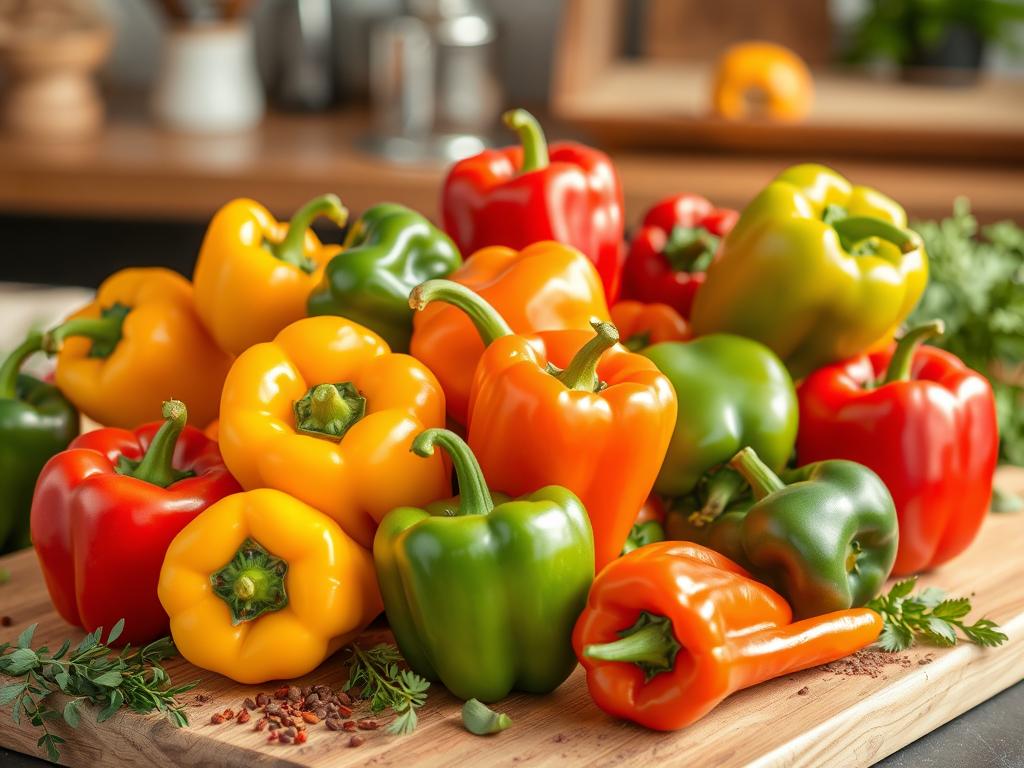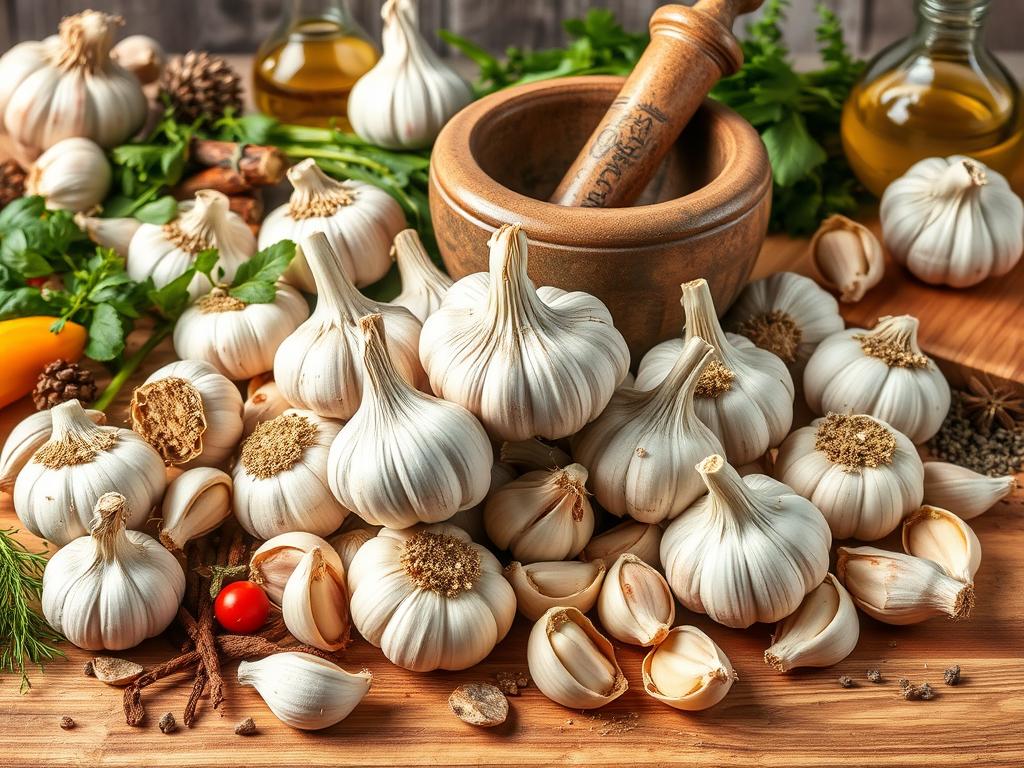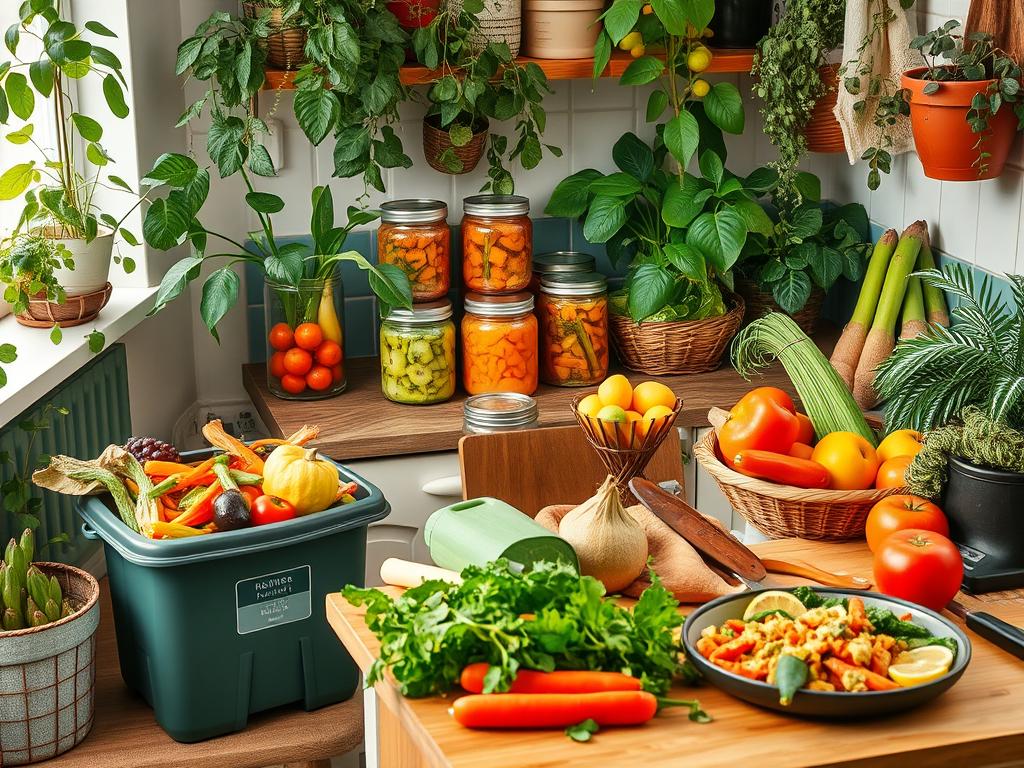Have you ever pulled a frozen meal out of the freezer, eager to savor the flavors you meticulously prepared? Perhaps you recall the days when you struggled with traditional meal preparation, resulting in wasted ingredients and uneaten leftovers. The journey from frustrated cook to freezer meal enthusiast often shapes our relationship with food, leading us to discover the magic of meal preparation through freezing.
In 2017, this realization sparked the creation of a business dedicated to simplifying freezer meal prep, ultimately transforming waste into convenience. Freezing meals is not just a time-saving tip; it’s an essential strategy that opens up a world of food preservation methods catering to both busy professionals and families alike. By embracing these methods, you can save not just time and money, but also enjoy delicious, home-cooked meals all week long.
As we delve deeper into the world of freezer storage tips, you’ll learn how almost any food can be frozen, aside from items like eggs in their shell and canned products. With clear guidelines and practical insights, this guide will help you master the art of freezing and ensure that your meals retain their marvelous flavors and nutritional value. Get ready to transform your kitchen into a haven of efficient, waste-free cooking that not only preserves your food but also enriches your life.
Key Takeaways
- Freezer meal prep significantly reduces food waste and allows for better budgeting.
- It’s essential to know which foods freeze well, enhancing your meal preparation options.
- Proper packaging and portion control are fundamental for successful freezing.
- Awareness of common freezing mistakes can prevent food spoilage and maintain quality.
- Safety in thawing methods is crucial for maintaining the taste and texture of meals.
Why Freezing Foods is a Smart Choice
Freezing food offers a variety of advantages, particularly for individuals seeking effective food preservation methods. With the hectic pace of modern life, many find it beneficial to prepare meals in advance. This practice not only helps in saving time in meal prep but also ensures that families have nutritious options readily available when needed.
Benefits of Freezing Meals
Freezing meals prevents food scarcity and contributes to minimizing waste. It cuts down the amount of food thrown away by extending the shelf life of perishable items, maintaining their quality. Foods stored in the freezer tend to retain their nutritional value, texture, and flavor for a more extended period compared to refrigeration alone. Proper freezer organization ideas can enhance your approach to meal prepping, ensuring efficiency and ease of access to frozen items when needed.
Longer Shelf Life
Foods stored in the freezer can last significantly longer than those kept in the fridge. For instance, bread and roti can only remain fresh for about a week in the refrigerator, while they can be stored in the freezer for up to three months. Freezing food slows bacterial growth and prevents spoilage, making it a reliable method for extending the lifespan of various foods.
Saves Time and Money
By investing time upfront in meal prep, families can enjoy substantial long-term benefits, including financial savings. Buying in bulk and freezing meals effectively minimizes food waste, thus allowing for cost-effective grocery shopping. The ability to quickly heat up a frozen meal during busy weeknights creates a convenient alternative to cooking from scratch, ultimately enhancing the overall dining experience.
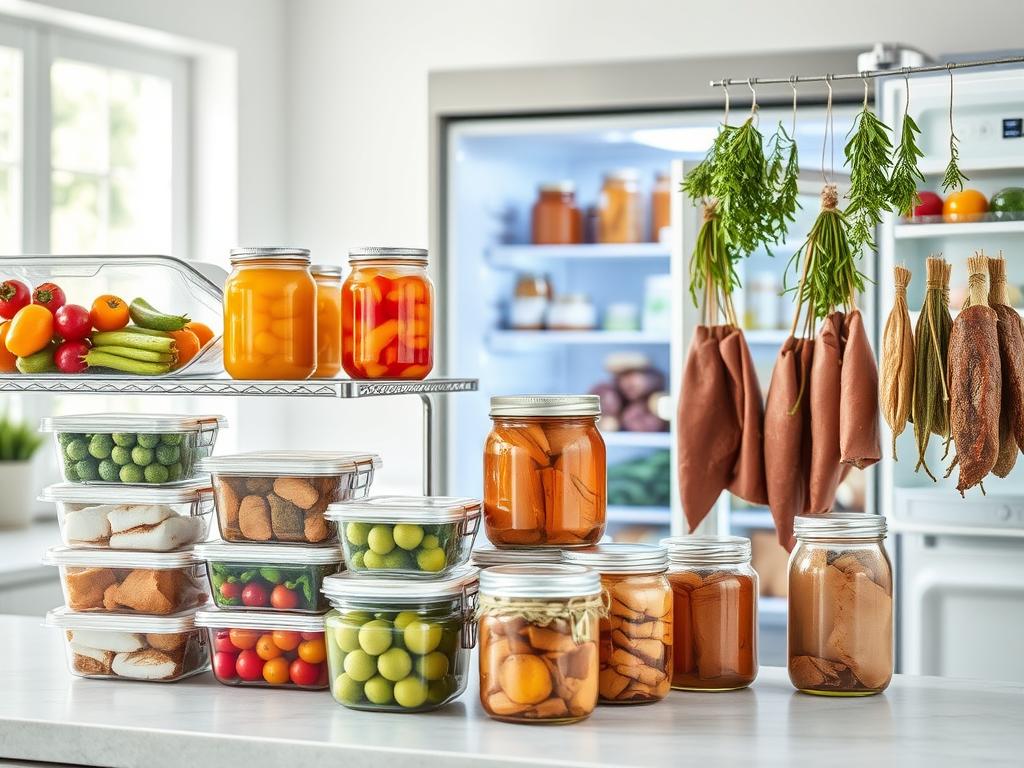
Best Foods to Freeze and Store
Understanding the best foods for freezing can significantly enhance your meal prep experience. Certain items freeze better than others, and following proper meal freezing guidelines ensures purity and flavor retention. Below is a detailed exploration of various food categories and how they fare in the freezer.
Fruits and Vegetables
Before freezing, fruits and vegetables should be blanched to preserve their nutrients and flavors. Some great fruits to freeze include strawberries, blueberries, and bananas. For vegetables, consider options like carrots, peas, and bell peppers. These choices maintain texture and taste, making them ideal for future meals.
Proteins and Meats
Lean meats such as chicken breasts and turkey can be frozen effectively. Proper meal freezing guidelines recommend storing them in vacuum-sealed bags or airtight containers for best results. Avoid freezing fish for extended periods to ensure freshness. Ground meats and prepared dishes like lasagna also hold up well in the freezer.
Dairy Products
While many dairy products can be frozen, it is essential to select carefully. Cheese and yogurt can be frozen, though they may experience some texture changes. Milk can also be frozen, but it is wise to leave room for expansion in containers. Opting for shredded cheese and individual yogurt cups may yield better results.
Grains and Baked Goods
Freezing grains and baked goods offers excellent convenience. Rice and quinoa freeze smoothly, along with items like bread and muffins. Use freezer bags or wrap the goods tightly to prevent freezer burn. Consider batch cooking dishes such as steel-cut oats or baking extra muffins for future breakfasts, as they make delightful and quick meal options.
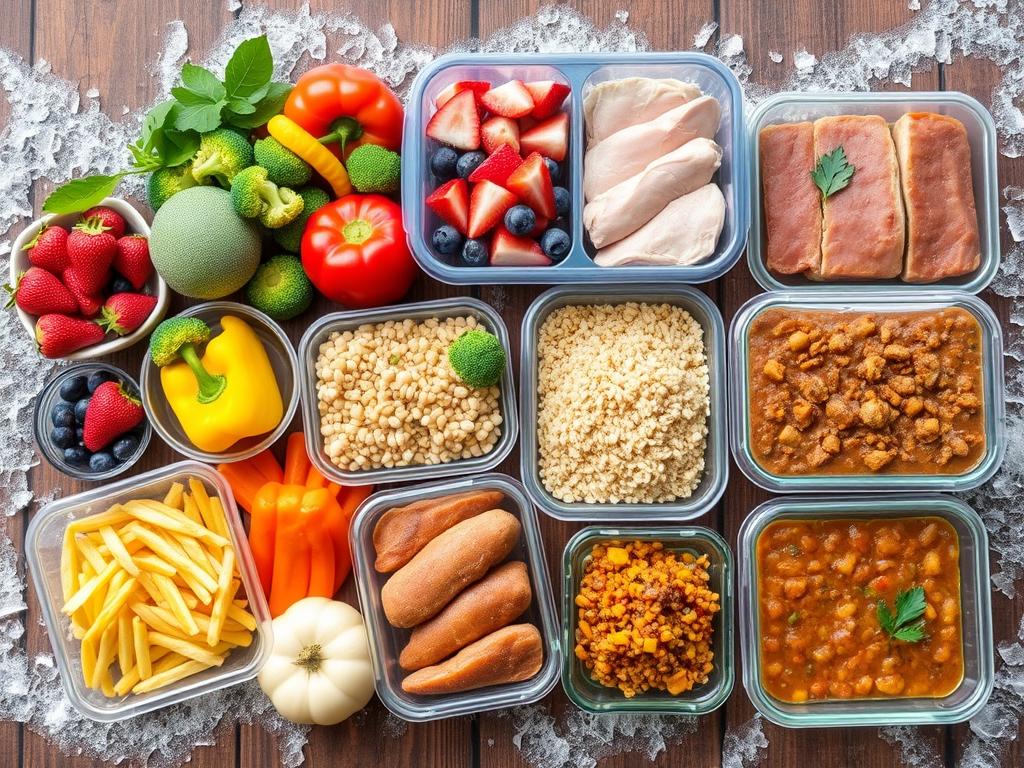
Incorporating these best foods for freezing into your meal prep can lead to a more efficient kitchen and reduced waste. Interested in nutritious breakfast ideas? Check out these healthful alternatives perfect for your mornings.
Preparing Meals for Freezing
Efficient meal preparation for freezing plays a crucial role in maintaining freshness and quality. Utilizing proper cooking and cooling techniques ensures that your food retains its taste when reheated later. Implementing effective freezer storage tips can significantly impact the overall success of your meal prepping.
Cook and Cool: The Right Way
Begin your meal prepping process by cooking food adequately, making sure not to overcook it. Overcooking can diminish the texture and flavor once reheated. After cooking, allow your meals to cool completely before transferring them to the freezer. Cooling helps prevent raising the internal temperature of the freezer, which can affect other stored items.
Portion Control Techniques
Control portion sizes by using containers that align with your family’s needs. Freezing meals in individual or double servings minimizes waste and simplifies meal planning. Large batches of hearty soups, stews, or casseroles freeze exceptionally well. Finding the right meal prepping techniques, such as these, ensures that you’re mindful of the quantities you plan to store.
Packaging Your Meals
Choosing the right packaging is essential for maintaining quality. Freezer-safe storage options like tempered glass containers or heavy-duty freezer bags work effectively to keep meals fresh while preventing freezer burn. Don’t forget to label containers with contents and dates for quick identification during mealtime. For more detailed advice on packaging and selecting recipes that freeze well, check out this freezer meal prep guide.
The Best Freezing Techniques
Utilizing effective freezer techniques can significantly enhance the quality and longevity of your frozen meals. Understanding these methods not only helps preserve food but also contributes to better meal prep experiences. Below are some essential techniques that ensure adherence to proper meal freezing guidelines.
Blanching Vegetables
Blanching is an excellent method for preserving vegetables before freezing. This quick process involves boiling the vegetables briefly and then plunging them into ice water to halt the cooking process. This technique retains vibrant color, flavor, and valuable nutrients while preventing spoilage. A variety of vegetables can benefit from this preparation method, including green beans, carrots, and broccoli.
Flash Freezing for Freshness
Flash freezing involves freezing individual portions of food quickly before transferring them to larger containers. This technique prevents items from sticking together, making meal preparation more efficient. For example, fresh scallops can be flash-frozen on a baking sheet and then stored in vacuum-sealed bags for easy access later. This method not only improves convenience but also preserves food quality, meeting proper meal freezing guidelines.
Using Vacuum Sealers
Vacuum sealers provide an excellent means of minimizing air exposure to food, drastically reducing the risk of freezer burn. When using a vacuum sealer, ensure to eliminate as much air as possible before freezing. Products like the ROAM 18-V Portable Vacuum Sealer from PacBak are particularly useful for this purpose, reducing air in bags or containers and prolonging the freshness of frozen ingredients. This is an integral part of effective freezer techniques that enhances the longevity of your meals.
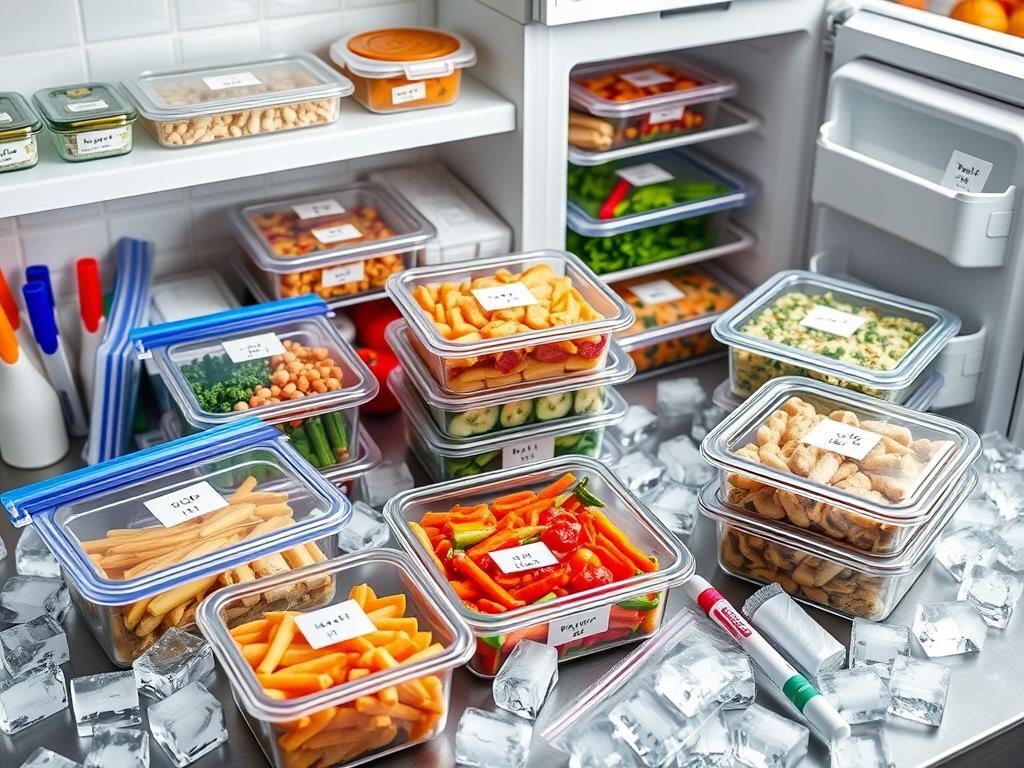
How to Thaw Meals Safely
Understanding the right methods for thawing meals is crucial for maintaining safety and quality. Several techniques, such as refrigerator thawing, microwave thawing, and cooking directly from frozen, offer varying benefits and considerations. Utilizing safe thawing techniques ensures that food remains safe to eat while preserving its flavor and nutritional value.
Refrigerator Thawing Tips
This method stands out as the safest choice for thawing. By allowing meals to thaw slowly in the fridge, food stays within safe temperatures, reducing the risk of bacterial growth. Here are some tips:
- Plan ahead to allow for adequate thawing time, typically 24 hours for every five pounds of food.
- Place items you are thawing on a plate to catch any drips and avoid cross-contamination.
- Refreezing meals that have thawed in the refrigerator is safe, provided they were properly handled and not left out too long.
Microwave Thawing: Pros and Cons
While microwaving offers a quick solution, it comes with trade-offs. Although this method can be effective for smaller portions, it often leads to uneven thawing and potential hotspots. Here are some aspects to weigh:
- Pros: Fast and convenient, ideal for last-minute meal preparation.
- Cons: Risks of partial cooking and texture changes. Foods should be cooked immediately after microwave thawing to ensure safety.
Cooking Directly from Frozen
This approach is gaining popularity. Certain meals, such as soups and stews, can be cooked directly from the freezer. Nonetheless, adjusting cooking times is necessary. Here’s what to consider:
- Frozen meats and casseroles may require an additional 50% longer cooking time compared to when they have been thawed.
- Using a thermometer is essential to verify that the food reaches safe internal temperatures.
- Foods such as frozen vegetables can also be added straight into dishes without thawing.
By employing these various safe thawing techniques, individuals can enhance their food preservation methods while ensuring that their meals remain delicious and safe. To further explore creative food preservation techniques, you can refer to the guide on making crispy homemade crackers.
Common Freezing Mistakes to Avoid
Freezing meals can be a simple and effective way to ensure nourishment is readily available. However, some common freezing mistakes can significantly undermine your efforts. Paying attention to freezer organization ideas and avoiding these pitfalls will help maintain the quality and safety of your frozen foods.
Not Labeling Your Meals
One of the most significant errors is failing to label your meals. Without clear labels, you may forget what’s stored in your freezer, leading to confusion and even food waste. It’s essential to note the date, meal name, and any specific reheating instructions. This practice not only promotes better freezer organization ideas but also helps you enjoy meals before they lose quality.
Overloading the Freezer
Another prevalent mistake is overloading the freezer. Cramming too much food inside can obstruct air circulation, resulting in uneven temperatures. This ultimately can compromise the freezing process and may cause spoilage or freezer burn. Make sure to arrange items thoughtfully, allowing for proper airflow and optimal freezing conditions.
Freezing Foods with Too Much Moisture
Lastly, freezing foods with excessive moisture can lead to unwanted ice crystals, negatively impacting texture and flavor upon thawing. Always ensure food is adequately cooled and preferably dry before freezing. This simple step can significantly enhance the overall quality of meals when defrosted. By steering clear of these common freezing mistakes, you can ensure that your stored meals retain their essential flavors and nutritional value.


